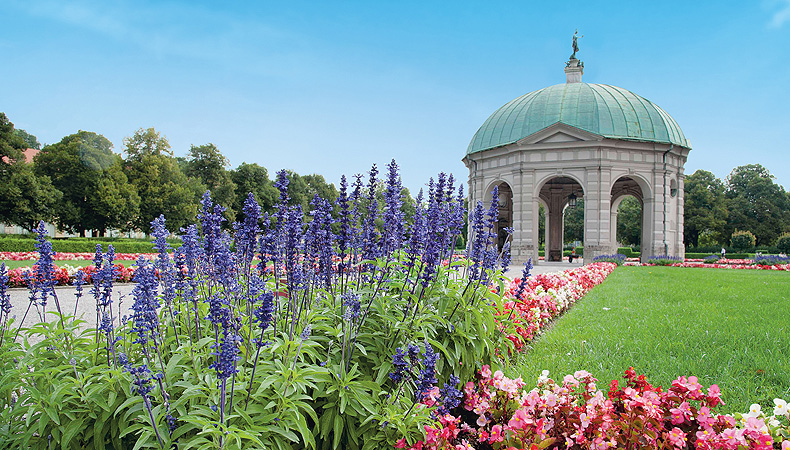Main information:
Court Garden

Creation of the Court Garden began in 1613, at the same time as the new buildings and extensions erected by Duke Maximilian I. The garden lay outside the moat that then surrounded much of the Residence.
The original garden was elaborate, containing circular tempietti, avenues of mulberry trees, fountains, arcades, ornamental box hedges and fruit trees. The central pavilion, designed in 1615 by Heinrich Schön the Elder, survives, its eight arches reflecting the division of the garden by cross-shaped and diagonal paths. The pavilion is capped by a copy of Tellus Bavarica, a monumental bronze figure symbolising the treasures of the Bavarian land: grain, game, water and salt. The statue was created by Hubert Gerhard around 1590 and was moved to the court carden pavilion from one of the Residence gardens in 1616 by Duke Maximilian I. To protect it from the elements, the original sculpture is now a part of the bronze collection in the Vierschäftesaal of the Munich Residence.
Until 1796 the eastern, low-lying section of the Court Garden was occupied by water features. The garden as a whole has been redesigned several times in accordance with prevailing tastes. Restoration work undertaken after the Second World War reinstated the original paths and the tree arrangement established in 1776.
The strip of garden behind the gate erected by Leo von Klenze in 1816 and directly in front of the Residence has been restored to its original appearance. This 1853 design by Carl Effner the Elder features the flower beds typical of that time. The sixteenth-century waterworks have also been restored and once more provide the fountains with water.


Facebook Instagram YouTube